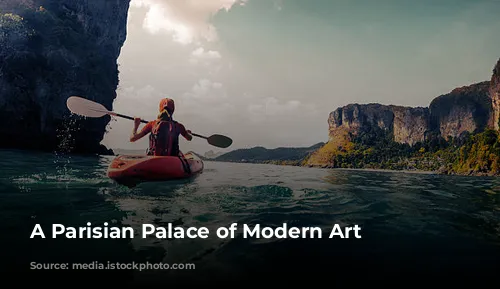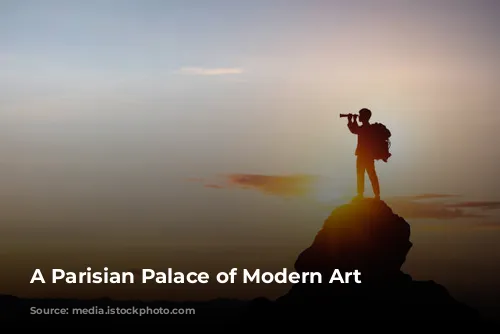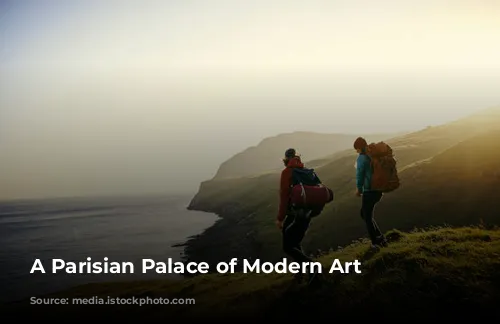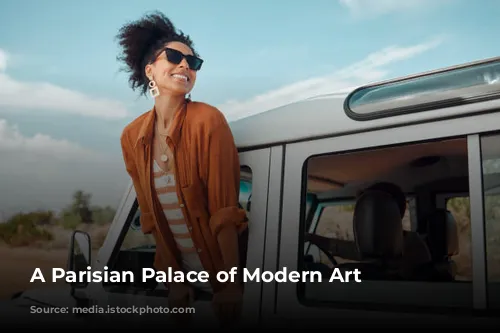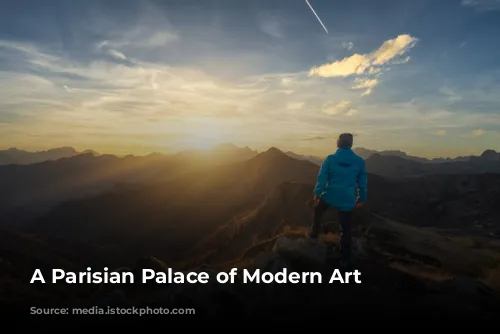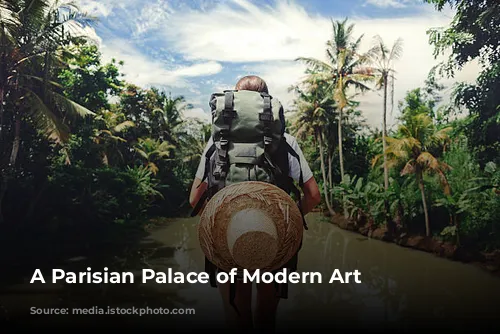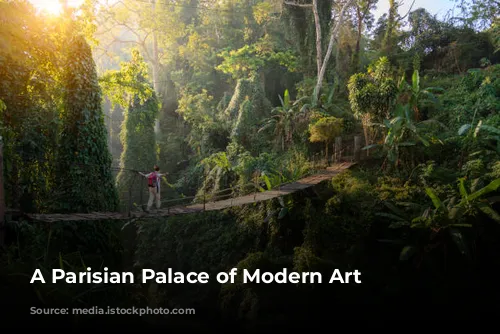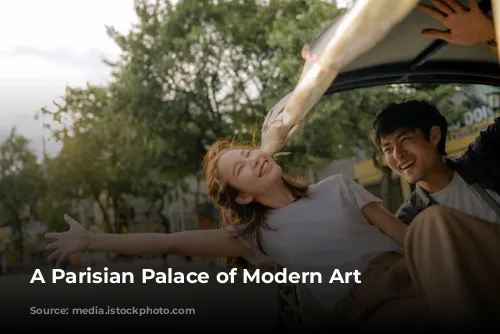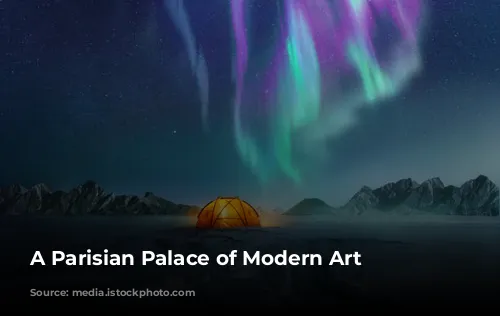The Palais de Tokyo, a grand architectural masterpiece nestled in the heart of Paris, is not just a building, but a vibrant hub for the modern and contemporary art scene. Located in the trendy 16th arrondissement, this remarkable structure stands proudly facing the iconic Trocadéro, its presence marking a pivotal point in the city’s artistic landscape.
A Divided Legacy: Two Wings, Two Identities
The Palais de Tokyo is a unique entity, divided into two distinct wings, each with its own unique purpose and history. The east wing, belonging to the City of Paris, houses the Musée d’Art Moderne de Paris, a treasure trove of modern art. Meanwhile, the west wing, owned by the French state, since 2002 has been dedicated to the Palais de Tokyo / Site de création contemporaine, a dynamic space celebrating the most cutting-edge contemporary art.
This fascinating division reflects the building’s diverse evolution over the years, showcasing the intertwining of art and history in its very fabric.
From Exposition to Evolution: A History Unfolding
The Palais de Tokyo’s journey began in 1937, when it was inaugurated as the Palais des Musées d’art moderne, a grand spectacle during the International Exposition of Art and Technology in Modern Life. This monumental event marked a turning point in the world of art, and the Palais de Tokyo, with its imposing structure, became a symbol of this era’s artistic aspirations.
Over the decades, the building has witnessed a multitude of artistic ventures, from the Musée d’art et d’essai to the Centre national de la photographie. Each of these institutions has left its unique imprint on the building’s character, shaping it into the cultural powerhouse it is today.
The year 2002 marked a significant shift in the Palais de Tokyo’s identity. The west wing, under the visionary leadership of Nicolas Bourriaud and Jérôme Sans, embraced a new purpose, becoming the Site de création contemporaine.
This dynamic space, dedicated to showcasing emerging French and international artists, quickly earned a reputation as a hub for contemporary artistic innovation.
The Palais de Tokyo: A Space for Experimentation and Discovery
The Palais de Tokyo is not just a museum; it’s a living, breathing space where ideas are born, creativity thrives, and the boundaries of art are constantly pushed. Its commitment to showcasing emerging artists and challenging traditional art forms has solidified its place as a vital player in the international art scene.
The Pavillon, a crucial element of the Palais de Tokyo’s landscape, provides a space for experimentation and collaboration. Artists and curators from all over the world are invited to this unique studio and laboratory, where they can push their creative boundaries and explore new artistic frontiers. The Pavillon is a testament to the Palais de Tokyo’s commitment to supporting the next generation of artists and fostering their growth.
Beyond Walls: The Palais de Tokyo in Print
The Palais de Tokyo’s influence extends beyond its walls, reaching out to a wider audience through its captivating Palais / magazine. This annual publication, featuring three editions, offers a unique perspective on contemporary artistic trends, showcasing a diverse range of artistic mediums and thought-provoking essays.
The magazine’s central artistic themes, always thought-provoking and conceptually rich, are explored through stunning photography, experimental media, and insightful essays. This multi-faceted approach allows the magazine to engage readers on a deeper level, fostering a deeper understanding and appreciation for the complexities of the art world.
In addition to its magazine, the Palais de Tokyo has also published a series of contemporary art encyclopedias, further solidifying its position as a leading authority on contemporary art. This ambitious project, spanning from 2007 to 2011, has become a valuable resource for art enthusiasts and professionals alike, offering a comprehensive overview of the ever-evolving contemporary art landscape.
The Palais de Tokyo, with its rich history, innovative exhibitions, and commitment to fostering artistic talent, continues to be a beacon of creativity and inspiration, a testament to the enduring power of art to challenge, inspire, and captivate. It is a place where the boundaries of art are continually redefined, and where new ideas and perspectives are constantly emerging, solidifying its place as one of the most vital art institutions in the world.
